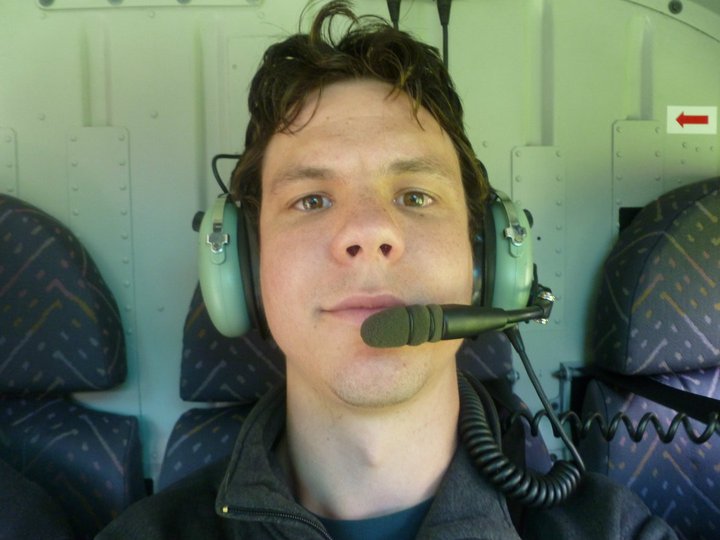ASK & DISCUSS
INDEXWobblecam
10 years ago - Paddy Robinson-Griffin
Just watched the last half-hour of Suffragette on the big screen, the director has opted for hand-held wobble shots, including some seated talking-head prison cell scenes. It's actually making me feel quite sick, and detracts from the film. It distracts from the potency of the scene.
Please, please, think really carefully before going handheld in your films, especially on closeups. Maybe it looks OK on your laptop monitor, but can be really viscerally horrid on the big screen!
Only members can post or respond to topics. LOGIN
Not a member of SP? JOIN or FIND OUT MORE
10 years ago - Nick Goundry
I'll defend the handheld camera. I've not yet seen Suffragette, but when used for the right purpose, handheld can be really terrific. It's kinetic and immediate, which works brilliantly in the right context.
It's simply a style of movement. Some people like it and some don't. For me, Paul Greengrass' work is an obvious example of someone who knows how to use it properly. I think in cases where handheld really draws too much attention to itself, it's because it's the result of a poor directorial decision.
As for the 'golden rule' of avoiding all camera movement "unless there's a very good reason"... I think most filmmakers would say they're pursuing visual dynamism that suits their story. I'd agree with them.
10 years ago - Dan Selakovich
Couldn't agree more with Paddy and John. Lord knows I've had my own shaky-cam rants on SP.
For me, the bottom line is this: we, as humans, do not see in shaky-cam. The farther you get from the human experience, the more you alienate your audience.
10 years ago - Dan Selakovich
Hi Nick, I posted a rant on shaky-cam about 6 months ago. I obviously disagree with you about Greengrass.
Here's the post (or most of it).
-------------------
...In what is basically a post on objectivity, or the lack of it that we have as filmmakers, I used Paul Greengrass' Bourne films as an example of lost objectivity. But those films are good for something else, too. Never, in the history of film, have I seen so many complaints on blogs, forums, reviews, and in one-on-one discussions about a single film style as I have on shaky-cam and quick cutting. Inexperienced filmmakers and studio executives tend to love it. Everyone else, for the most part, tends to hate it. I'm one of those that hates it. I mean I really hate it. And I see it more and more. But the problem with imitation in general, is that the imitator won't be as good at it or use it correctly. I have only seen shaky-cam used effectively once, in Tom Ford's A Single Man. The reason it works well there, is that it shows the panic of the character. It came at a point when all we'd seen up to then was calm, beautifully composed, shots. It was jarring, and it needed to be. But it wouldn't have worked if the entire film was shot that way.
People (and when I say "people" I mean studio executives) tend to point to the success of Paul Greengrass and the 2nd and 3rd Bourne films in favor of shaky-cam. I argue that without the properly shot first Bourne film (thank you, Doug Liman), the next 2 by Greengrass wouldn't have been at all successful. In fact, I'd wager that if Greengrass had shot the first one, there wouldn't have been sequels. When a certain camera style is constant, it loses its effectiveness. In that, Greengrass blows it. We know Bourne is going to win, but we want to SEE HOW he wins. Think of it this way: if you have a film that is 99% static shots, then at one point you dolly in for a close up, that dolly move has impact. But if every shot in the film is a camera move, the move when you need it loses all meaning.
But here's why shaky-cam doesn't work on a human level: we, as humans, don't see that way. Ever. Shaky-cam is an interruption to our visual sense, and is very dangerous to use. YOU will see your shaky-cam shot differently than your audience. You've seen it dozens, if not hundreds of times. Your eye will fill in what you know to be there and even stuff that isn't. Your audience, seeing it for the first time, cannot compensate for the wild shot or a five frame edit. Depending on screen size, it takes the human eye 3 to 5 frames to recognize what it is seeing. But it does this based on past experience of seeing things (we don't see with our eyes, we see with our brains). Now try wrapping those five frames in a blur of images. There is absolutely no way to discern what we are seeing even on longer shaky-cam shots. Since we don't see in shaky-cam mode in real life, our brains have a hard time filling in with past visual reference. Shaky-cam builds a barrier between your film and your audience. They will never become completely involved in your characters because they will be constantly reminded that they are watching a film. And speaking of screen size, that 7 inch monitor on set will dampen the effect of shaky-cam. On a 40 foot screen, that tiny move is now huge. To you, as director, it will seem the same. To us, the audience, it's a tiny boat in a hurricane.
Dolly shots, tilts, pans and cuts work because that is how we see in everyday life. Try this little experiment I've used on students (I sometimes lecture on directing). Hold up each index finger at arm's length, about 2 feet apart. Just using your eyes (no head turn), try to look smoothly between your left index finger, moving to your right index finger. It's physically impossible to do this smoothly. Your eyes will stop and start. They will try to focus on things in the background, etc. Now try moving your left hand TO your right hand, following the left with your eyes. It's easy to watch your left hand in an absolutely smooth way. That's why dolly shots work: because that's the way our brains work.
Camera movement and placement must work for the film you are making. Lately I see hand-held and shaky-cam used in really inappropriate places. Again, I bring up Greengrass and the Bourne films because they are an easy example to illustrate my point, but he's not the only offender. It's difficult to have an emotional moment between two characters if the camera is jittery. When is the last time you looked into your girlfriend's or boyfriend's eyes with your head bobbing from side to side?
Another trend that comes from Greengrass is the abandonment of screen geography. For example, in the 2nd Bourne, early in the film, an assassin is chasing Bourne and Marie. But we never have a clear idea where the assassin is because Greengrass has dropped screen geography. We feel no tension because we don't know how close to death they are because there is no relationship between the chased and the one doing the pursuing. Shaky-cam and quick cuts can only up the tension if they are used sparingly. They can't replace screen grammar.
If because of this technique, you can't distinguish between the protagonist and antagonist, you've lost the audience--because in that moment, they are trying to figure out who is who. They are out of the film. It creates a visual hiccup.
To completely visually understand the 2nd and 3rd Bourne films, you have to see them more than once, and preferably on a small screen. That's too late. In the example cited above, it took me two viewings on DVD before I completely understood where the bad guy was. 100 years of film grammar shot to hell.
-------------
10 years ago - Dan Selakovich
And here is the entire thread if you're interested:
https://shootingpeople.org/discuss/view/201aeb2c9f617811a66422a3
10 years ago - LUKE JARVIS
For an interesting case study take a look at Downton Abbey Sunday 9pm ITV. OK yes it's prime-time mainstream TV, not cinema, not cool or "edgey", but utilises two different & coherent shooting styles appropriately & subtle enough not to be too distracting. The "upstairs" world of the rich is wider shots & smooth dolleys, whilst "downstairs" world of the servants is handheld (or at least "loose" tripod work) and tighter shots. Basically high & low production values mirroring the two social classes, opulent vs earthy.
10 years ago - Dan Selakovich
Bourne 2 and 3 were successful because people wanted to see what happened to the character, and because Damon had become a huge star by then. DVD sales for the first were astronomical. Not because they wanted to see shaky-cam, or that the style in any way added to the success. After Greengrass, many films started using that style, and were huge flops. Including the Bourne reboot without Damon.
10 years ago - Dan Selakovich
Agreed, Andrew! While the younger generation is more visually literate than people of my age, you still can't get around the way a movie screen is observed by a human brain. In the end, do you want to watch a movie or become involved in a movie? I'd rather become involved!
10 years ago - Dan Selakovich
Yep, Sue. Thankfully this shaky-cam trend is ending, at least on bigger budget films. The young filmmakers still love it, though. I used to teach a seminar called "Finding the Right Shot" that taught filmmakers how to place the camera for emotional impact. To me, the shots have to mirror the emotional needs of the characters and camera movement used sparingly, so that when you DO need it, it has impact.
Please let us know what your daughter thinks. No matter the age, it still takes the human brain 3-5 frames to recognize what it's seeing. So short cuts all in a row is, frankly, stupid. Shaky-cam plus short cuts... well, I'm trying to swear less in these posts.
10 years ago - John Lubran
It really is astonishing Paddy just how many otherwise merited professionals fall for egocentric techniques with our proper regard for the viewer. Other than technology and the infinite variations of theme possible from the seven stories that exist, there's nothing new in film making, it's all been done a million times since 1895. We ought to know better by now!
Golden rule number one remains - The camera must not move, unless there's a very good reason
Golden rule number two - If the camera moves it should be as smoothly and as slowly as possible, unless there's a very good reason
Golden rule number three - the action takes place in front of the camera, not in the camera.
These Golden Rules are based on the premise that if the viewer is noticing the camera work then the camera work is wrong.
10 years ago - Nick Goundry
Well, we'll have to agree to disagree! Handheld certainly draws attention to itself to those interested in production, but no more so, in a great film, than a well-executed Steadicam or tracking shot.
Greengrass' Bourne movies may have been disliked by some, but his style certainly didn't hurt their box-office. I'm a fan of all Matt Damon's Bourne movies, but Doug Liman's opener notoriously stumbled in cinemas and only actually had a sequel greenlit when it found success on DVD.
It was only Greengrass' subsequent partnership with Damon that eased filming and helped create a franchise. The box-office figures for Supremacy and Ultimatum are hard to argue with. That's why Universal will be relieved they've got Greengrass and Damon making another one right now, after the box-office glitch of Bourne Legacy.
There may well have been a lot of people who said they hated Greengrass' style in Supremacy. But the numbers say they still came back for Ultimatum and brought their friends and families with them. So yes, agree to disagree.
10 years ago - John Lubran
Of course there's a place for pushing boundaries. Golden rules are not barriers, but one should understand them in order to be qualified to break them. Hand held wobbly cam becomes increasingly distracting the bigger the screen; so clearly better suited to TV. With factual programmes where action is being followed hand held works but with drama wobbly cam usually fails, unless of course the shots are pretending to follow factual action from the camera's point of view.
Whilst there's no accounting for taste, once the callow has sated it's apatite, removing the film makers urge to highlight his own presence within the story is always better for the vewer. That much was understood even before the advent of talkies!
10 years ago - Richard Connew
The soaps used to be all over the place but I was recently watching Emmerdale Farm (haven't seen it for a long time but we had an actor we know in it) and said to the wife (she is also a film maker) this would work well in 3D if dof was increased just a bit, she asked why, I said because its not moving all over the place and when it does move its subtle and slow plus the angles are more interesting. Essentially it more or less complies with what John said above. Another observation was I actually managed to keep with the story, indeed the whole programme actually seemed so much better for it. As nearly all my work is 3D I noticed perhaps more than most when things move too much as it makes the audience sick as their eyes can't catch up with the camera, that still applies even in 2D. Hopefully we have now seen the end of the trendy lets shake and move the camera as much as possible but I doubt it!
10 years ago - Andrew Griffin
It's very rare I respond to discussions on SP, as a novice and amateur filmmaker (in the proper sense) I follow discussions to learn, not to offer up my currently ill informed opinions. On the matter of shaky cam however, I feel my opinion is as valid as anyone else's. I watch far more films than I'll ever make and, as a viewer, shaky cam sucks. It has its place admittedly, but not for the duration of a film. And it has to be handled well.
In response to the claim that shaky cam saved Bourne; DVD sales saved Bourne, as stated above, the fact that box office was greater for the second two films was down to the fact that Bourne fans were already drawn into the (very strong) story and already identified with Damon's character. We wanted to see how it ended. Like a number of others I know, I went to the cinema for Bourne Supremacy but waited for the DVD of Bourne Ultimatum. Shaky cam didn't enhance the story, it just made it feel like I was watching someone watching the action unfold. Maybe I'm just not of the right generation and shaky cam doesn't suit my varifocals, but I don't think sales of tripods have anything to worry about any time soon.
10 years ago - Sue Carpenter
I so agree with all the shakycam antis. It really does make me feel seasick. But I am fearful that it is a generational thing and that young people don't even notice it (I'll report back after taking my 15 y o daughter to Suffragette tonight - which I am now much less looking forward to) and so will use it without realising how disturbing it is for many viewers.
I recently saw a NFTS graduate show (hmm - Gavron is one such isn't she?) and the standout film was a quiet, chilling tale of a young girl who met a convict online and is off to prison to marry him. The frames are very spare and classical in composition, there's very little action, lots of close ups of the girl ... Crying out to be shot with a tripod, and yet the director's used handheld. Ruins the whole film, because it's so at odds with the style and content. We watch her sitting motionless, waiting to be called in, and the camera is bobbing up and down. I kept thinking, there's no going back with this - the director has made one fundamental mistake that is present throughout the entire film and can't be corrected in post.








